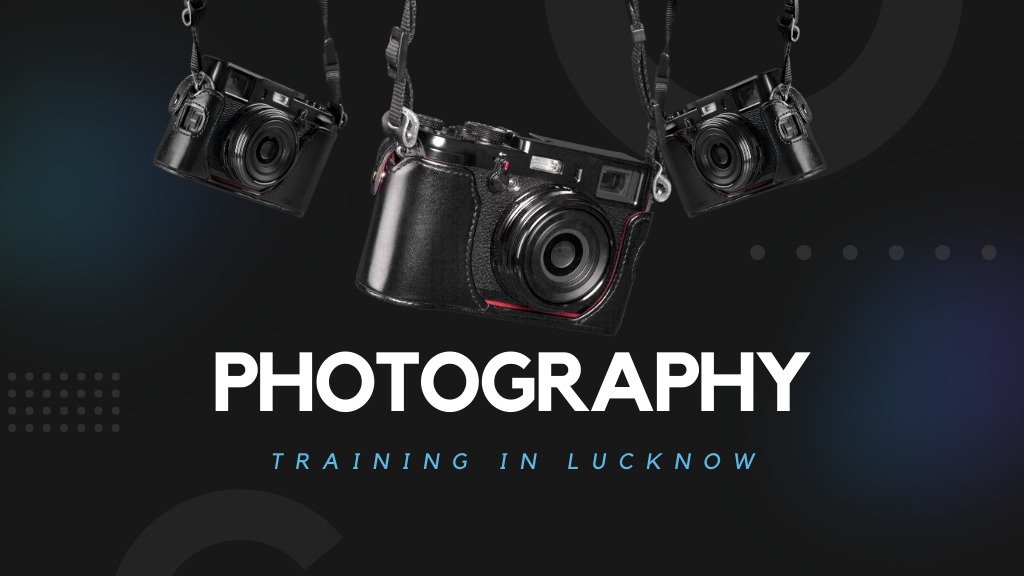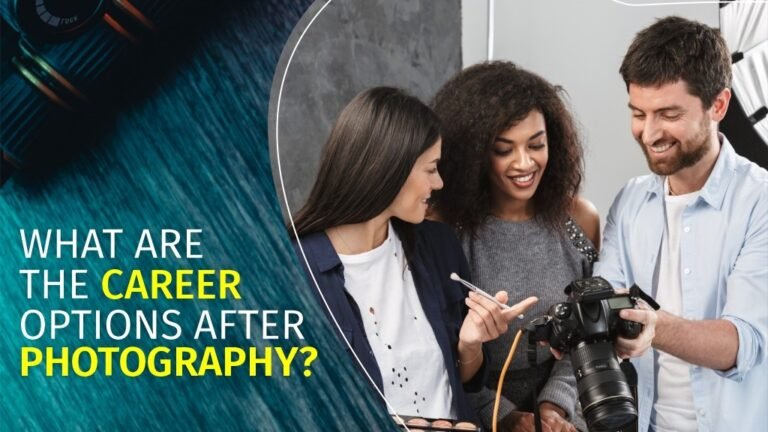The World Can be Captured in Various Ways, but Photography is Undoubtedly One of the Best. Pictures have influence; you only need to look at your local newscast, magazine article, or book cover to see this. For this generation, Photography is a rapidly growing and well-liked career option. With the Best Photography Course and the development of the media, advertising, and fashion industries, Photography has become a popular and lucrative career choice for young people in India. Previously, the general public only considered Photography a hobby, but it has since become a significant profession.
There will be a sufficient number of domestic and international job opportunities for photography graduates. The popularity of Photography has increased as social media platforms keep growing. As a result, it is currently an interesting career to pursue. Various Photography Institutes In Lucknow provide Best Photography Course In Lucknow.
The art and science of Photography go hand in hand. While the camera, editing, and composition are the technical facets of the profession, it is a means of artistic expression.
The Courses in Photography
- BFA in Photography
- B.Sc. in Photography
- MFA in Photography
- M.Sc. in Photography
- BA in Photography
In addition to all these courses, there are also diploma programs offered in Photography. These are all offered by numerous colleges throughout India. A career in Photography will be rewarding with manageable working hours, job satisfaction, and a stable work-life balance. You can get the ultimate Photography Course In Lucknow at the best prices; Lucknow is a hub for photographers.
And to begin with your journey in Photography, In this article, we curated the “beginners guide” required to kick-start your Photography Course after 12 and build a constructive approach, correctly taking the right shots. So, let’s get started.

How to do Photography Cameras Work?
We learn best visually as beginning photographers. And I’m here to make the process of learning Photography Course as simple as I can for you.
Exposure
Exposure is crucial for new photographers to get a great shot. You can control your digital camera and take better pictures if you understand how exposure works. An exposure is created by combining the speed of the shutter, aperture, and ISO.
You’ll soon discover that these factors have an impact beyond exposure. Additionally, they alter the depth of field and contribute to motion blur and digital noise. You can start using manual mode when you comprehend how each one operates. This is the point at which you regain control over your camera.
Aperture
Three steps are involved in aperture exposure. The aperture will be our first topic. This is the aperture in the lens where light enters. It resembles your eye’s pupil in some ways. More light enters the lens when the aperture is larger, and vice versa.
More light enters the camera as the aperture widens and the f-number decreases. This works well in dim lighting. However, remember that it will result in a very shallow field depth. When photographing a landscape, this is not ideal.
Shutter Sound
The shutter receives the light after it has travelled through the lens’s aperture. You must now choose how much reflected light will enter the camera. To avoid motion blur, you typically only need a small fraction of a second (for instance, 1/250 s).
And for photographing at night, the shutter speed can range from extremely fast (1/4000 s) to extremely slow (30 seconds). It all depends on the subject you’re shooting and the amount of light you have at your disposal.
ISO
The shutter speed and aperture both serve to filter the light before it gets to the sensor. Here is where we make the ISO setting decisions.
The brightness rises as the ISO value is raised. However, the image quality also degrades at the same time. More digital “grain” or noise will be present. Therefore, you must decide what is more important to you: exposure or going against the grain.
Knowing the Metering Modes on Your Camera
It’s difficult to understand digital Photography for beginners. Learning about the shutter speed, aperture, and ISO isn’t all there is to understanding exposure. You must also become familiar with how your camera perceives light.
Using metering modes, you can instruct your camera on how to view a scene. The exposure would be entirely different if you took the same picture in evaluative mode.
This fundamental photographic principle holds the key to identifying the mystery of why your images are either overexposed or underexposed.
Histograms
After taking the picture, the histogram displays a mathematical exposure overview. It informs you of a photograph’s level of exposure. It can be terrifying for new photographers to comprehend.
You can’t get a very good visual representation of this information on LCD screens. This is due to the fact that they are influenced by both the brightness of the screen and the surrounding lighting.
Depth of Field
You must open up your aperture when photographing in low light to let in enough light for the lens. However, a shallow depth of field is a serious side effect of this. You could use this in a novel way. It’s not the only option, though. For example, you should often use a smaller aperture when taking pictures of landscapes. You should use a narrow aperture to keep the entire scene in focus. Depth of field is essential when learning all the fundamentals of Photography with a photography course in Lucknow.
White Balance
I wish I had learned the basics of white balance much earlier than I did. When I look back at some pictures, I pause to consider my thoughts. The white balance alters the entire photo’s colour cast. It is in charge of providing overall warmth. It can choose whether your image looks blue, orange, or warm.
Polarizing Factors
Polarizing filters restrict the light that can enter the lens to only one angle. This eliminates reflections and glare from non-metallic objects.
Glass and water are most affected, along with atmospheric haze. More naturally saturated colours will result from removing these reflections and anomalies. It is impossible to duplicate this in post-production, but it looks fantastic. Understanding is crucial for this reason.
Conclusion
There is a lot more information about Photography in abundance. However, I’m hoping that the suggestions in the list above will motivate you to take better photos in 2023 and beyond! Stepping outside of your typical photos for a while can be helpful, whether you’re stuck in a creative rut, or you just desire to continue discovering new things. Explore genres, grab some Photography Course after 12, watch for seasonal changes, practice taking similar pictures to ones you like, or do anything else that makes you enjoy Photography even more.

